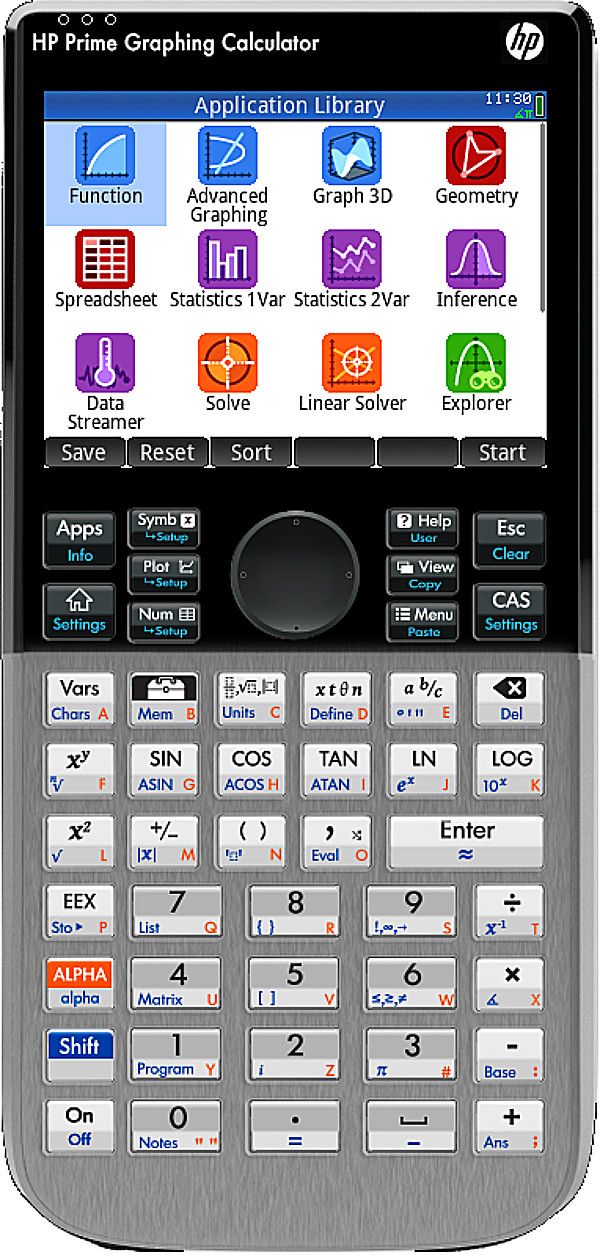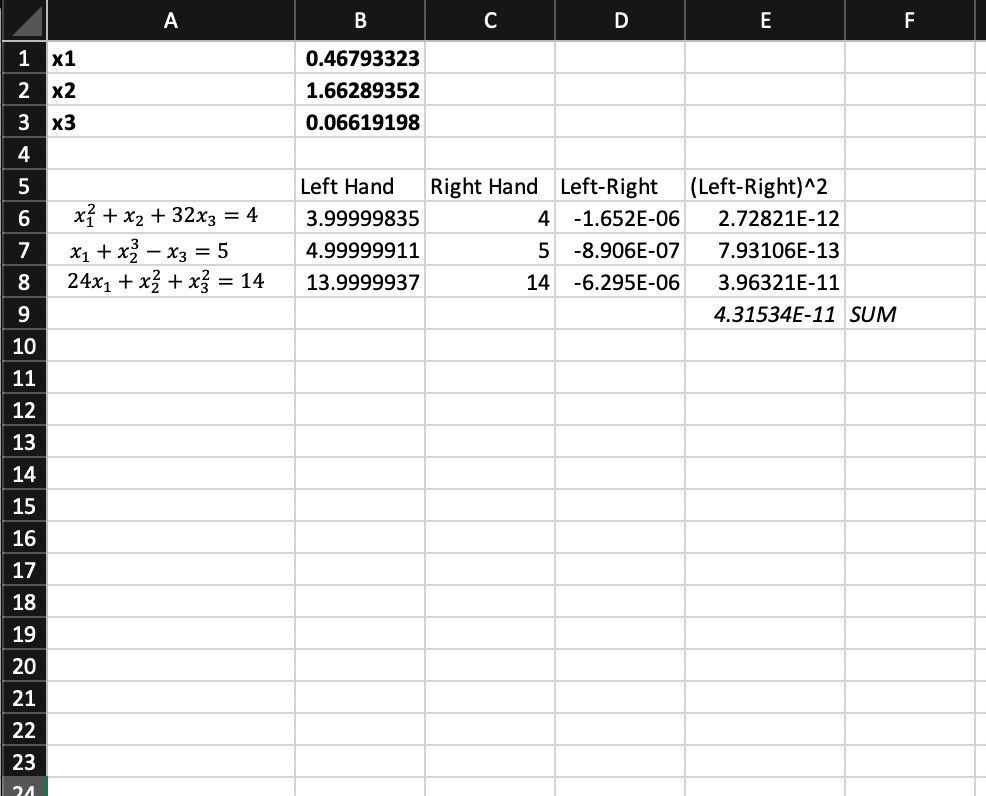Calculators for Engineers and Scientists

Prerequisites- None
mechatronics.studio does not receive any compensation or affiliate bonuses from any of the companies described in this article. This is an independent review.
Computing technology evolves regularly. I will work to keep this article updated as new and interesting options enter the market. Updated- July 29, 2023.
Historical Context
For thousands of years, humanity has sought to use mathematics to ever increasing degrees of usefulness.
Modern digital calculators help to ease the burden of performing mathematics, however, a computer is historically a more general term for anything used to facilitate the practical computation of mathematics. Abacus, precomputed tables, slide rules, and calculators all facilitate computing.






Figure 1: Many different tools have been created to help perform mathematical calculations. Abacus image courtesy of Ariesa66. Math table image courtesy of Sandid. Slide rule image courtesy of Erwin Österreich. Mechanical calculator image courtesy of Andrew Martin. Calculator image courtesy of WOKANDAPIX.
For much of history, a computer was actually an occupation filled by skilled humans; experts in mathematics and arithmetic. Computers were assigned the task of practical and everyday arithmetic associated with engineering buildings, vehicles, products, etc.

Human computers remained popular in engineering and sciences up until the 1960's and 70's when digital computers displaced them. It took quite some time for safety critical programs like the Apollo program to trust the calculations from digital computers. During the transition, many human computers cross-verified and became some of the first programmers for digital computers.
In the past few years, a number of beautiful historical films celebrating human computing and the introduction of digital computers have been produced. Below, I've recommend a couple of my favorites.


Modern Engineering Computing Tools
The number of computing tools available can be overwhelming and they range in cost from free to $10,000+ per license. Universities, governments, and corporations with big budgets are able to afford premium calculation and simulation tools (Matlab/Simulink, Mathematica, Maple, ANSYS, Adams, MathCAD, Minitab, JMP, etc.). Premium tools typically offer free or very affordable licenses to students to stimulate their adoption and prepare students for work in large organizations. The harsh reality is that most engineers have access to a very small subset of these tools or none at all! Sorry.
Some of the tools shown here might seem trivial... but that's sort of the point. Engineers have been using many of these tools for decades. They remain accessible and useful for all engineers at any level.
A modern mechatronics engineer is typically prepared with the following calculation tools:
- Pencil and Paper
- Graphing Calculator
- Word Processor
- Spreadsheet Software
- Mathematics Programming Language
- System Simulation Software
Pencil and Paper
Most engineers do their preliminary and hand calculations in a notebook with square gridded pages. The grid is valuable for helping to draw diagrams and format equations. Straight lines are easy to draw and circles can be sketched without a compass. You jest, but seriously; doing a college engineering assignment on lined or plain white paper could be an automatic fail.

Graphing Calculator
A lot of calculators are primarily geared toward high school students. It can be somewhat of a challenge to find one effectively featured toward engineering.
I recommend choosing a calculator with textbook formatting for equations, a linear and non-linear solver, a symbolic engine, and 2D/3D graphing capability. I have personally enjoyed using the HP Prime Graphing Calculator, which normally retails for $\$230$ but can be found on sale for less than $\$150$.
https://hpofficesupply.com/product/hp-prime-graphing-calculator/
Other benefits of this calculator include a backlit color touch screen and rechargable battery. Additionally, there are free applications that provide an emulated calculator for Windows, MacOS, Android, and iOS, which means you can use this calculator on nearly any device! HP has done a really good job at making this calculator powerful and accessible beyond the educational sphere.





Figure 4: HP Prime graphing calculator and several demonstrations of device functions. Top Middle: Textbook formatting | Top Right: Symbolic calculations | Bottom Left: Graphing | Bottom Right: 3D Graphing
Another very popular brand of calculator is Texas Instruments, which has a sort of monopoly on the educational market. The Ti-Inspire CX CAS and Ti-89 Titanium will both serve you well, though apps for desktop and mobile are oriented to teachers rather than users.
If you've been a student at any point in the recent past, you've likely got a Ti-84 Plus or Ti-84 Plus CE nearby. These calculators are fine choices but the user interface is difficult to navigate and they are missing many features found on high end calculators. Unless you already have a Ti-84, I wouldn't recommend buying one.
If your budget does not permit for the use of a more expensive graphing calculator (and you don't want to use one of the desktop/mobile apps), I highly recommend the Ti-36X Pro Scientific Calculator, which can be bought for around $\$25$. This calculator is actually really good, providing a basic version of almost every feature of its larger cousins except for graphing and symbolic calculations.

It is also possible to use a generic scientific calculator or the scientific calculator included on pretty much every computer and smartphone ever built. Windows, MacOS, iOS, and Android all have their own flavor of scientific calculator built-in. These will be sufficient for many purposes but using them for an intense sequence of calculations quickly becomes cumbersome and awkward. It's easy to mistype and difficult to catch user errors.
In this blog, we will utilize the HP Prime for educational content related to graphing calculators.
Word Processor
Engineering calculations need to be documented and shared; a word processor typically fills this need. The most common documentation tools are Microsoft Word and Microsoft OneNote. The most important properties of engineering word processing software are:
- Text writing
- Equation writing
- Image embedding
- Text formatting and organization
Calculations are typically documented and derived symbolically and then actually computed elsewhere (like graphing calculators or spreadsheet software). These documents also typically contain necessary diagrams and descriptions to obtain the relevant equations.
Other software that meet these needs are Google Docs, Apple Pages, and OpenOffice Writer.
As an alternative to standard word processing software, some engineers use markdown and LaTeX (languages with specific syntax used to generate documents) to write their documents along with a suitable rendering software (like Typora or TeXstudio). The benefits of this approach are that documents are generated from code and can therefore be version controlled. The drawbacks are that one must learn the syntax to use these languages and special software is requried to read documents. Everyone in an organization uses standard word processing software; not everyone uses markdown/LaTeX rendering software.
In this blog, we will use Microsoft Word for educational content related to word processors (though most of the time, content that would be normally contained in a word document will be directly posted on the website).
Spreadsheet Software
Spreadsheet software isn't just for accountants. Because everybody in an organization typically has access to spreadsheet software, it is very easy to collaborate with it. Spreadsheets have become the beating heart of many engineering organizations. Microsoft Excel, Google Sheets, Apple Numbers, and OpenOffice Calc all fit the bill, though Microsoft Excel has many advanced functions that set it apart from the others.
With spreadsheet software we can analyze data, perform statistics, solve systems of equations (both linear and non-linear), graph functions, calculate numerical derivatives/integrals, perform finite element analysis, solve differential equations, and so much more.





Figure 5: Microsoft Excel shown and applied to several relevant problems in engineering. Top Left: Integration | Top Middle: Differential Equations | Top Right: Function Plotting | Bottom Left: Linear Fitting | Bottom Right: Solving Systems of Equations
Spreadsheet software is strictly numerical, there is no built-in symbolic engine. Every variable needs its own cell, which means that it occupies space on the spreadsheet.
Each Excel sheet has a maximum size of 1,048,576 by 16,384; there is no limit to the number of sheets per excel file. Engineering applications can quickly push spreadsheet software to its limits of capabilities so it's important to keep them in mind.

In this blog, we will use Microsoft Excel for educational content related to spreadsheets.
Mathematics Programming Langauge
There are many problems that cannot be solved by spreadsheet software. For these, engineers turn to a full fledged programming language. There are a lot of programming languges; C, C++, C#, Swift, Java, Javascript, Python, Matlab, Julia... the list goes on. The ideal mathematics programming language has the following properties:
- Easy to learn and write
- Repository of mathematical libraries
- Plotting
- Algebra
- Symbolic engine
- Vectors
- Solvers
- Fourier transforms
- Control systems and transfer functions
- Image processing
- ...
- Easy to share and collaborate
- Cross platform
- Useful for both prototypes and production
- Fast at executing calculations
One language that satisfies these desired traits is Python, currently one of the most ubiquitous programming languages in the scientific community. The use of Python will be introduced in more detail in a future article.
In this blog, we will use Python for educational content related to mathematics programming languages.
System Simulation Software
Products and machinery are at their core the intentional and planned evolution of physics in order to produce a desired result. Water is pumped between homes, treatement plants, and reservoirs. Electrons flow from one component to another to perform useful functions. Motors transmit torque, gears rotate, mechanisms move. All of these systems are composed of many different components, each of which can be modeled by a set of differential equations. System simulation software is used to generate and solve these differential equations to simulate the behavior and function of products and machinery. These system models are often called digital twins.
Commerical system simulation software is often extremely expensive, to such a degree that we won't even bother to review these options.
OpenModelica is an open source system simulation software based on the Modelica modeling language.




Figure 6: OpenModelica is an application for visually constructing systems to be simulated and analyzed. Visual diagrams are translated into code representing differential equations which are then solved.
The use of OpenModelica will be introduced in more detail in a future article.
In this blog, we will use OpenModelica for educational content related to system simulations.
A note on Mathworks Matlab/Simulink
Many engineering students will be surprised that I have not recommended Mathworks Matlab/Simulink. I used Matlab/Simulink extensively in college, it's great software. Unfortunately, commercial licenses for Matlab/Simulink are very expensive and every little add-on (many of which are for very basic functions) costs hundreds to thousands of dollars.
Though ubiquitous in university, many companies choose not to purchase Matlab/Simulink and ask their engineers to use cheaper tools like Excel and Python. The license costs are even more prohibitive for the garage startup or hobbyist.
Another significant drawback of Matlab/Simulink is its closed source nature. To share and collaborate, your peers will also need to have a license with all of the same add-ons you use.
If your network and workflow are already deeply committed to and can afford Matlab/Simulink, by all means, continue to use it. However, Matlab/Simulink are really not required to do real engineering work and the software recommended here are not only fully capable of replacing Matlab/Simulink but are actually extensible into even more powerful use cases.


